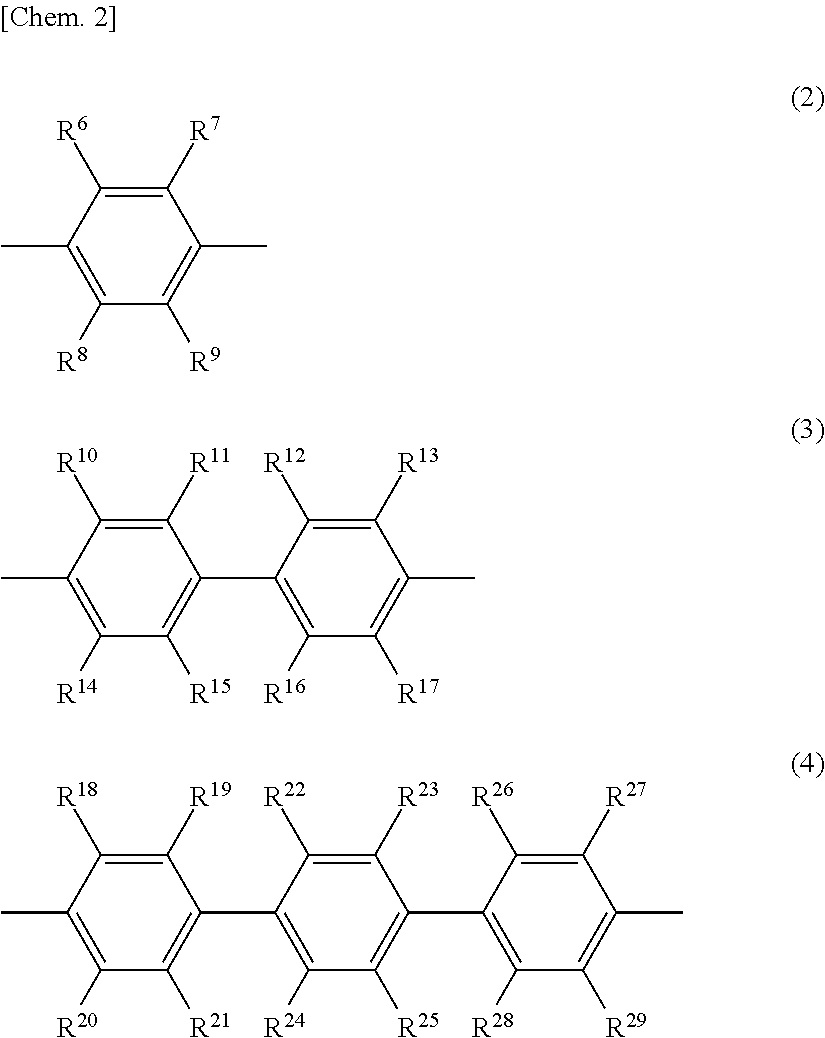Detachable layer-forming composition and detachable layer
a technology of detachable layers and compositions, which is applied in the direction of film/foil adhesives, solid-state devices, coatings, etc., can solve the problems of difficult to increase the productivity of device fabrication, long laser treatment time, and damage to the layer to be released, etc., to achieve suitable releasability, suitable adhesion, and greater simplification
- Summary
- Abstract
- Description
- Claims
- Application Information
AI Technical Summary
Benefits of technology
Problems solved by technology
Method used
Image
Examples
preparation example 1
[0142]The reaction mixture obtained in Synthesis Example S1 was used directly as the plastic substrate-forming composition.
[5] Preparation of Release Layer-Forming Compositions
working example 1-1
[0143]A release layer-forming composition was obtained by adding BCS and NMP to the reaction mixture obtained in Synthesis Example L1 and diluting to a polymer concentration of 5 wt % and a BCS concentration of 20 wt %.
working examples 1-2 to 1-6
[0144]Aside from using the reaction mixtures obtained in, respectively, Synthesis Examples L2 to L6 instead of the reaction mixture obtained in Synthesis Example L1, release layer-forming compositions were obtained in the same way as in Working Example 1-1.
PUM
| Property | Measurement | Unit |
|---|---|---|
| temperature | aaaaa | aaaaa |
| temperature | aaaaa | aaaaa |
| temperature | aaaaa | aaaaa |
Abstract
Description
Claims
Application Information
 Login to View More
Login to View More - R&D
- Intellectual Property
- Life Sciences
- Materials
- Tech Scout
- Unparalleled Data Quality
- Higher Quality Content
- 60% Fewer Hallucinations
Browse by: Latest US Patents, China's latest patents, Technical Efficacy Thesaurus, Application Domain, Technology Topic, Popular Technical Reports.
© 2025 PatSnap. All rights reserved.Legal|Privacy policy|Modern Slavery Act Transparency Statement|Sitemap|About US| Contact US: help@patsnap.com



